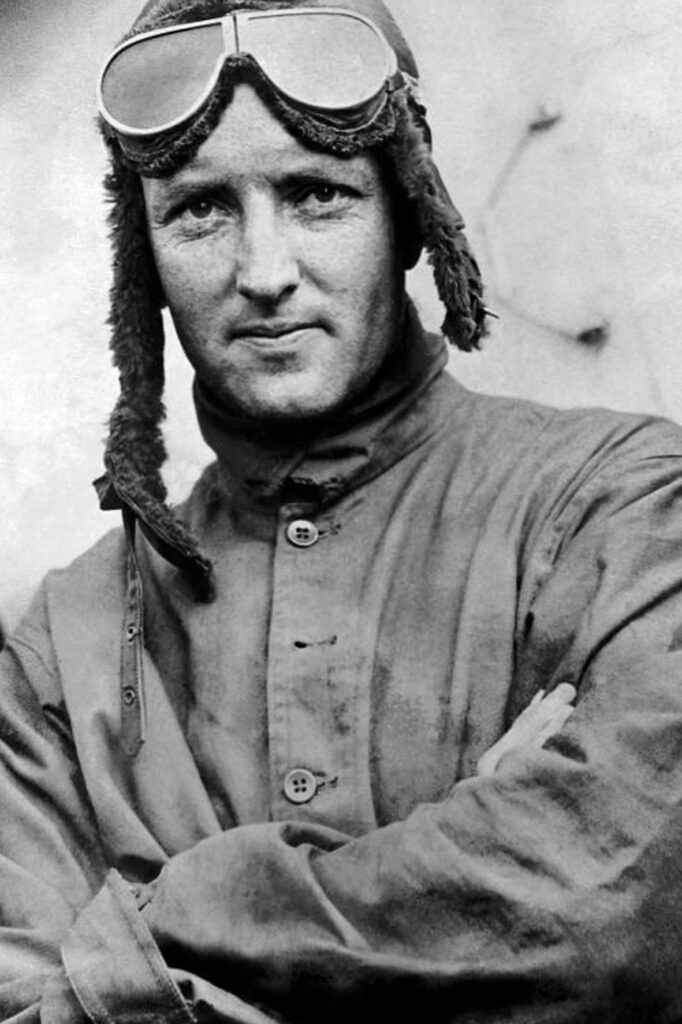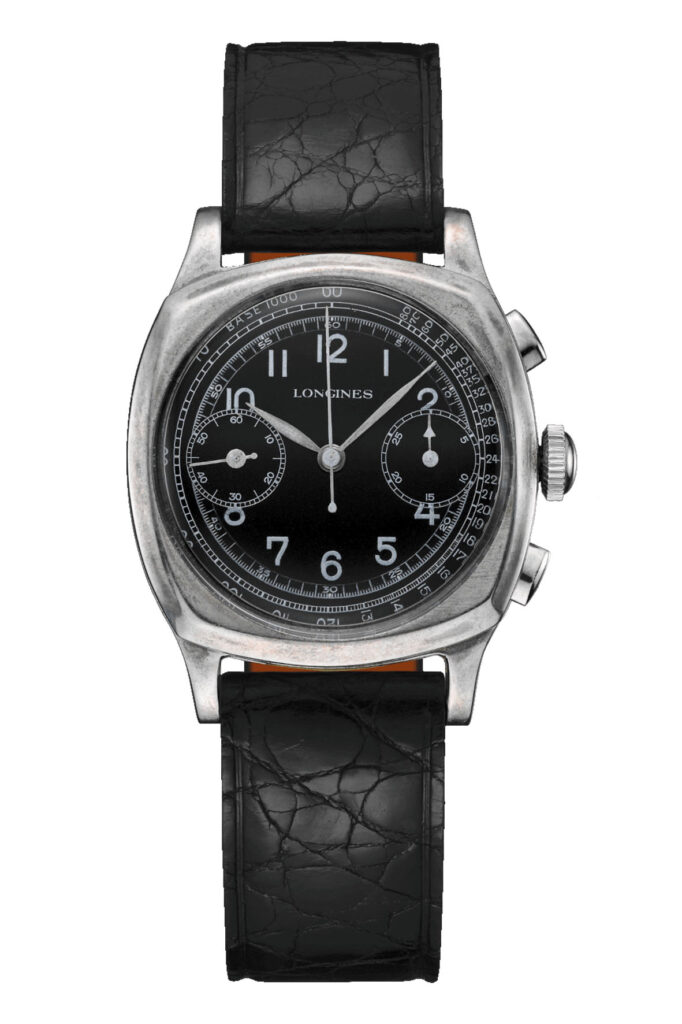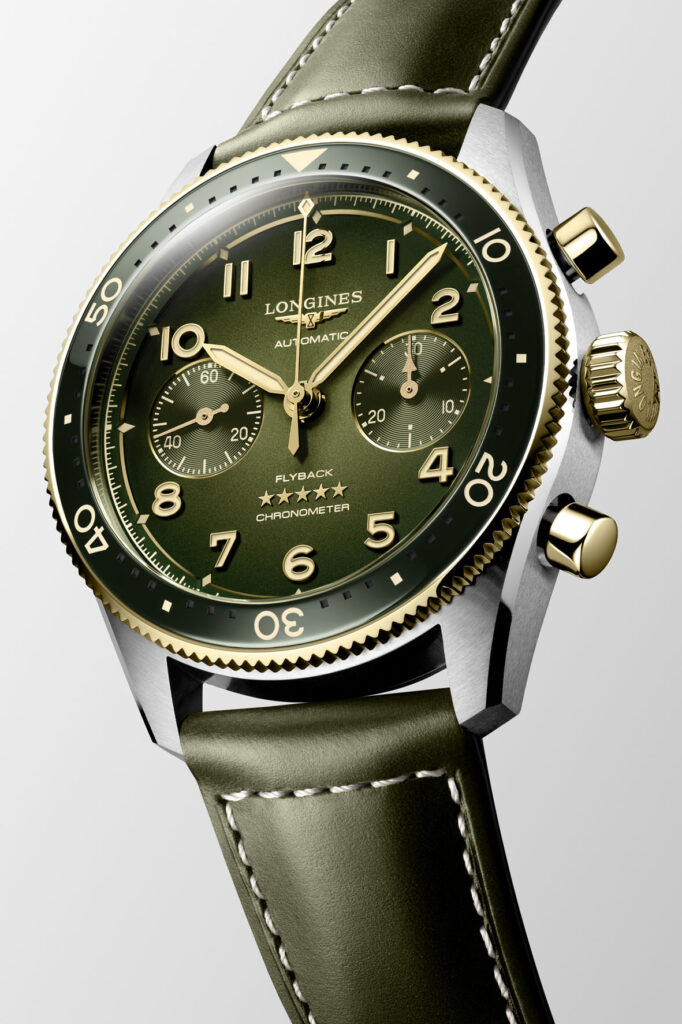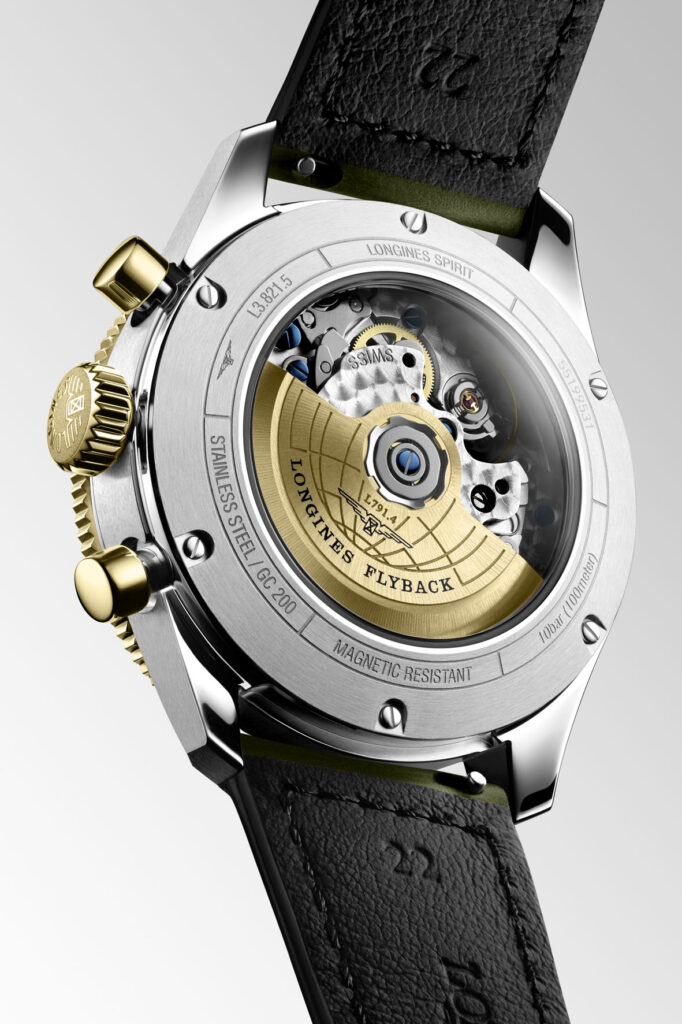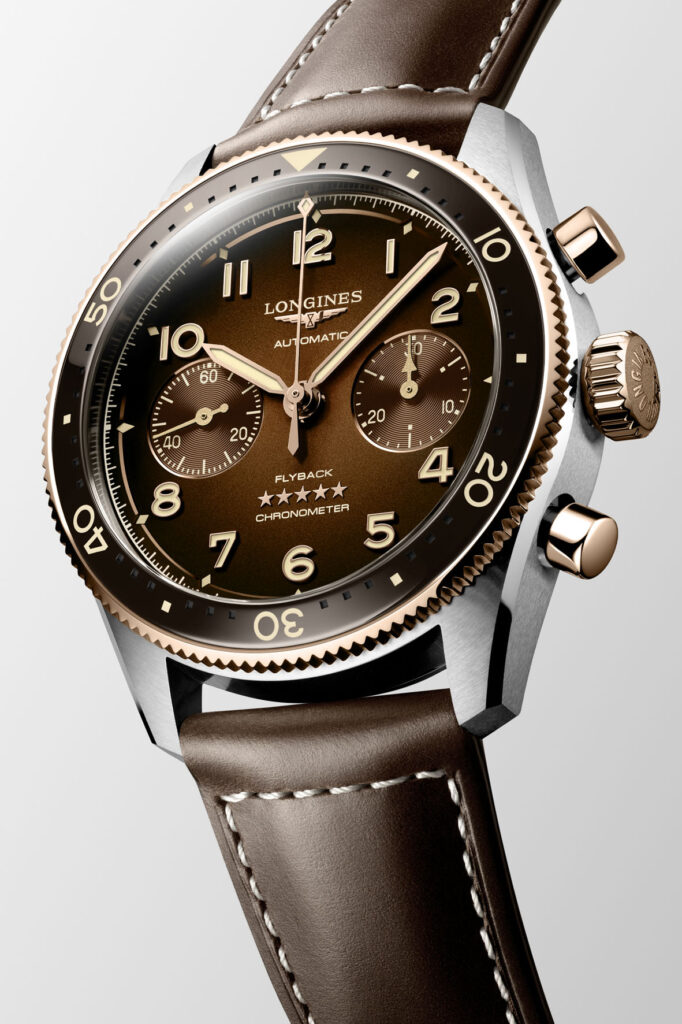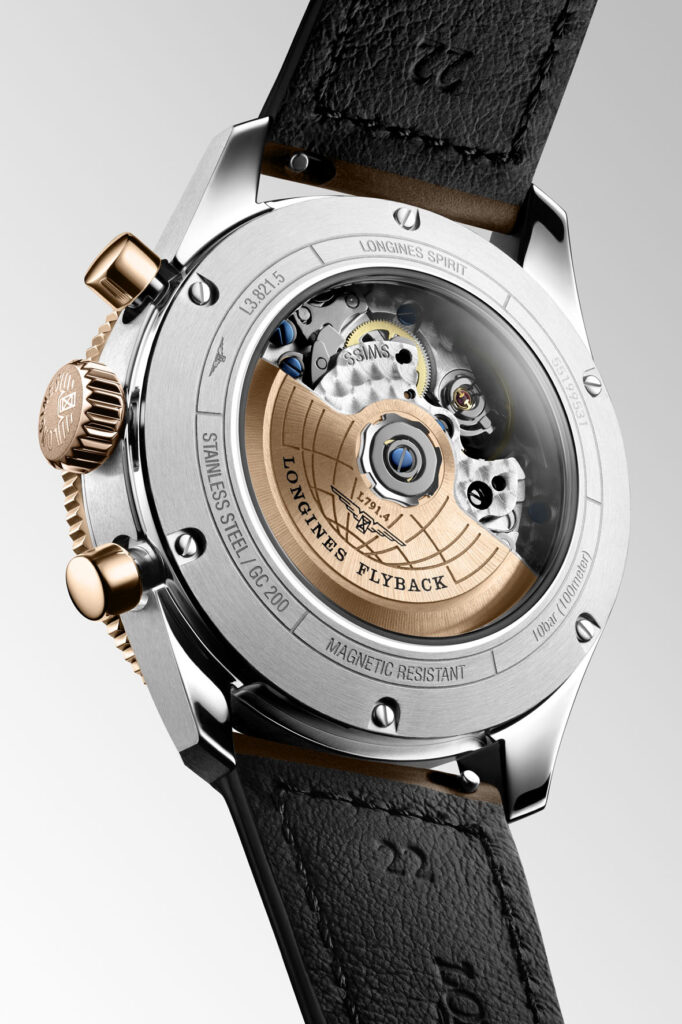Longines Spirit Flyback: soaring with elegance
15 August 2024In sports, it is customary to say that there’s no point in changing a winning team. An approach that is also valid in watchmaking, judging by what Longines is doing with the Spirit collection. Relaunched in 2020 with the steel time-only, it has gradually been enriched with the introduction of the chronograph, the titanium time-only, the GMT Zulu Time, the steel flyback chronograph and the titanium chronograph. A selection that grew first in complications, then in materials, and that is continuing along this trend. Today, in fact, for the first time the Spirit Flyback chronograph is dressed in steel and gold. A new chapter in that aeronautical tradition that Longines cannot do without, and from which the Spirit Flyback draws heavily.
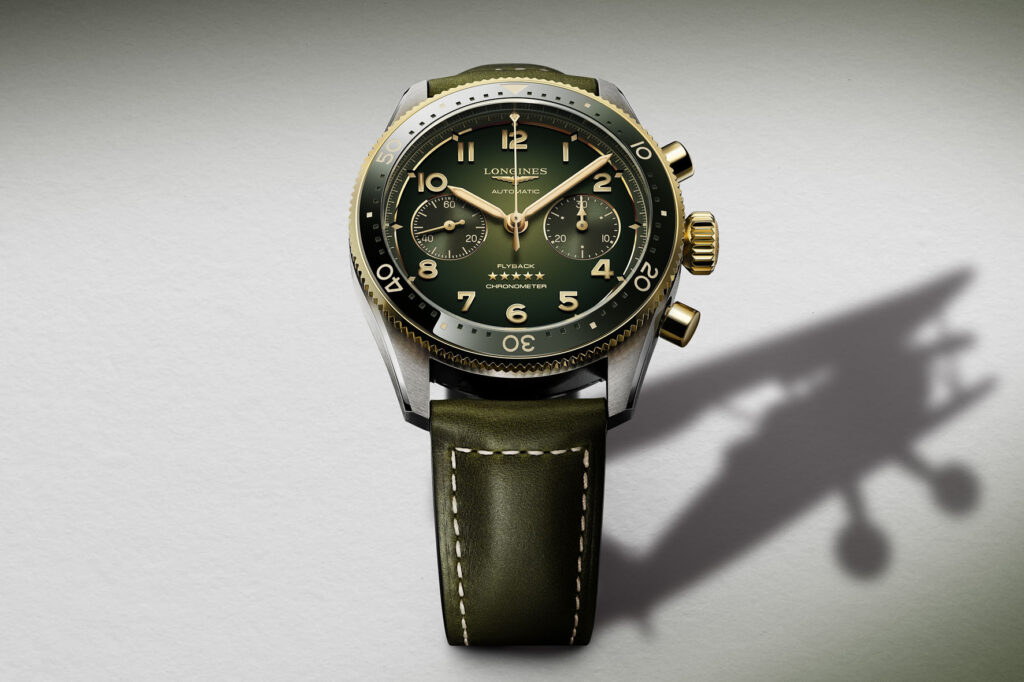
LONGINES AND THE BIRTH OF THE FLYBACK CHRONOGRAPH
Although Longines was already supplying instruments to aviation pioneers at the end of the 19th century, the highlight year for the brand was 1919, when it became the International Aeronautical Federation’s official timekeeper. From there, the brand began to make watches designed specifically for flight. Watches that had to be robust, easy to use with gloves on – inside cockpits that were often uncomfortable and always cold – and, above all, accurate with useful functions. With these in mind, in 1925 Longines developed the first wrist chronographs with a flyback function.
However, it was not until 10 years later that the manufacture filed a patent application for this complication – patent granted in 1936. Following this, Longines built the first mass-produced movement with a flyback function, known as Calibre 13 ZN, the production of which was industrialised from 1940 onwards. From a technological point of view, the first half of the 20th century was a period of great creative fervour for Longines, during which it developed numerous complications intended for aviation. Not only the flyback chronograph, but also the first watch with a second time zone (known as Zulu Time), the Lindbergh Hour Angle or the Weems Second Setting, whose names were a tribute to great flight and naval pioneers with whom Longines collaborated.
THE FLYBACK FUNCTION AND THE CALIBRE L791.4
Today’s Longines Spirit Flyback brings the pioneering vision of its origins into the 21st century. Updated in terms of materials and precision, it counts on a mechanism worth remembering. If the English speakers call this function flyback, the French use ‘retour en vol’; an inscription that we find on Breguet’s Type XXIs, with even a reference dedicated to the Italian market displaying ‘ritorno in volo’ on the dial. The particularity of this complication is that it allows a series of sequential measurements to be taken with lightning speed.
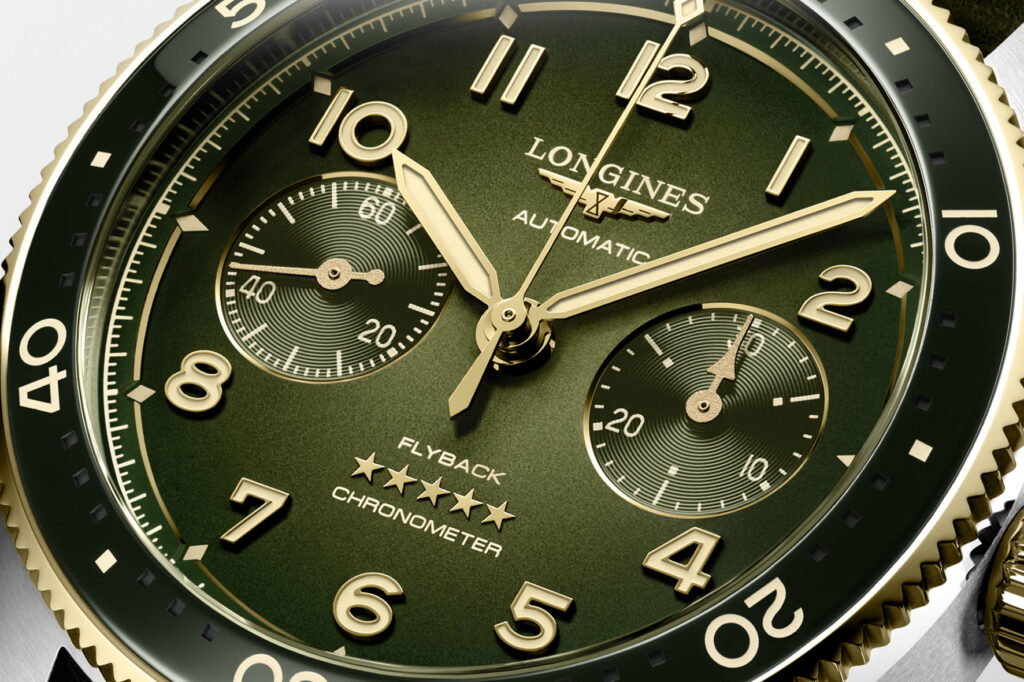
Pressing the push-button at 4 o’clock makes the chronograph seconds hand return to zero; releasing it restarts it and the countdown resumes instantaneously. In essence, one push of the same button almost simultaneously stops, resets and starts a new time measurement. To the benefit of pilots in the past who, before the introduction of the complication, had to stop one measurement and immediately start another in order to follow the flight plan.
The introduction of the flyback function within a chronograph movement entails some significant changes for the latter. From an engineering point of view, with a traditional chronograph it is not possible to reset to zero during the timing phase, as a brake lever stops the chronograph seconds hand in the position in which it has been stopped, so that the time can be read on the dial. When the seconds hand resets to zero, the brake lever moves out of position and, thanks to a heart-shaped cam, pushes the chronograph hand to a rest position. The flyback function eliminates this device which does not allow the two successive starts, and modifies the reset system with a dedicated lever, thus allowing the chronograph to be released.
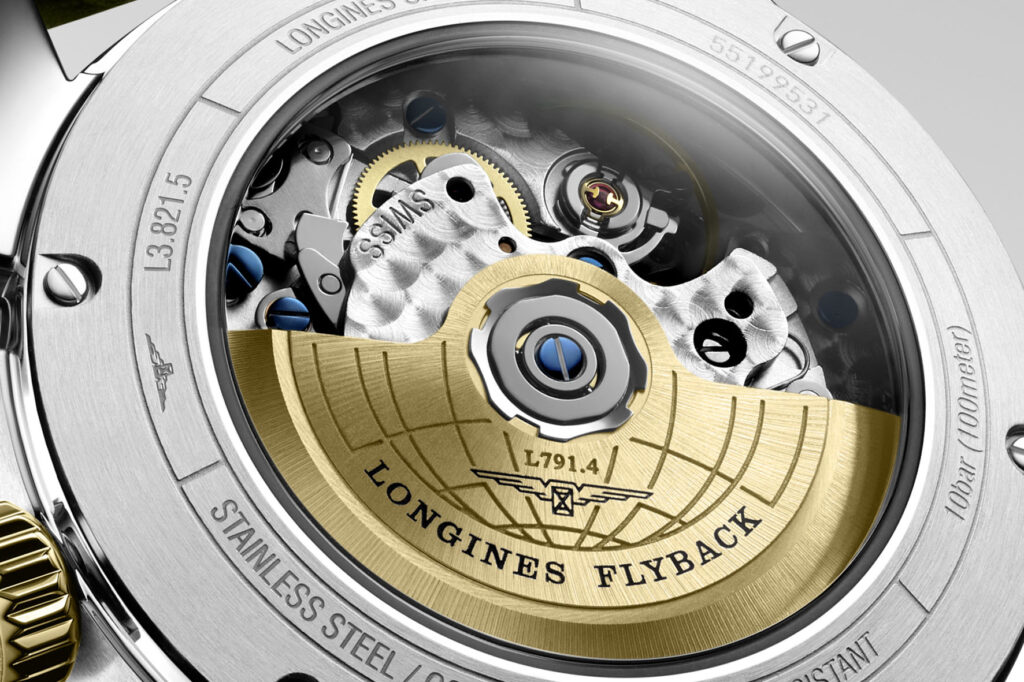
On the Longines Spirit Flyback, all this technical work has resulted in the automatic calibre L791.4, which equips the new steel and gold versions, as well as the previous steel and titanium ones. Developed on an ETA A08.L11 base, in addition to the flyback function it features the classic column wheel for sorting the chronograph functions. In terms of materials, the balance wheel has a silicon balance spring that makes the calibre insensitive to magnetic fields and temperature changes – now the standard for Longines movements. Thanks to these characteristics, the movement (which works at 25,200 vibrations per hour and has a power reserve of 68 hours) has passed the COSC tests and has deserved an official chronometer certificate. As for the other versions of the Longines Spirit Flyback, the calibre is visible through the transparent case back and is characterised by the oscillating weight reminiscent of the globe.
THE LONGINES SPIRIT FLYBACK’S AESTHETICS
The basic aesthetics of the new versions of the Longines Spirit Flyback are thesame as those of the previous references, but strongly characterised by the presence of gold. We are therefore talking about a case 42 mm in diameter by 17 mm thick, a domed sapphire crystal with multi-layered anti-reflective treatment on the inner and outer sides (synonymous with great care), and a bidirectional rotating bezel with polished ceramic insert. The dial is matt shaded, with the small seconds counter at 9 o’clock and the 30-minute counter at 3 o’clock featuring a concentric finish that distinguishes them from the whole. Also here, as for the previous references, the absence of a date window stands out.
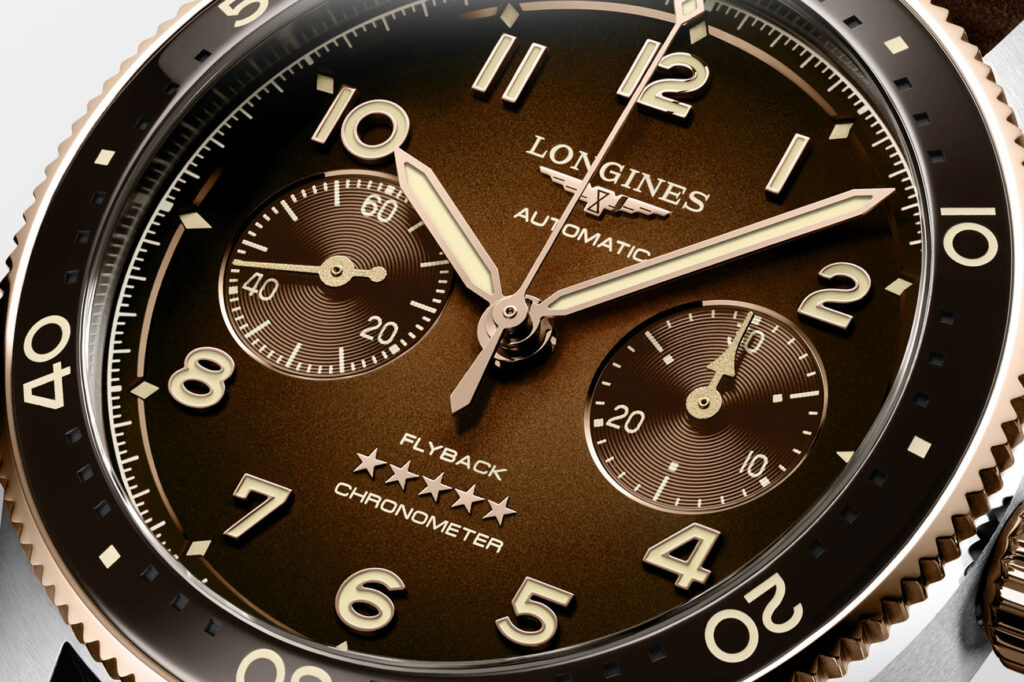
The case is insatin-finished steel with polished bevels, water-resistant to 10 bar. As we wrote above, its aesthetics are strongly influenced by the presence of gold, which is either 5N 18K rose gold or 2N 18K yellow gold. Each of the two shades is combined with a different colour of dial and leather strap: pink gold with brown dial and strap, yellow gold with forest green dial and strap.
There is gold in the screw-down winding crown, the chronograph pushers, and the knurling on the bezel. It also characterises the five stars at 6 o’clock along with the Flyback and Chronometer inscriptions; a way of reinforcing Longines’ concept of precision, given that in its special ‘grammar’ the five stars attest to the COSC certification ofthe calibre housed inside the watch.
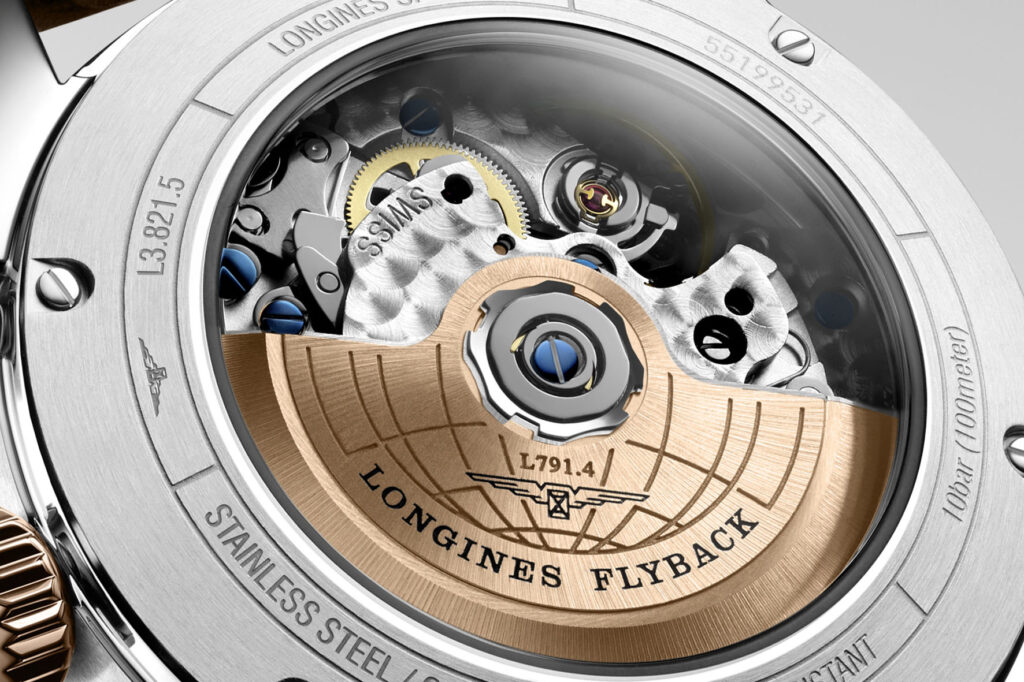
Matching gold accents can be found on the chronograph hands, on the hour and minute hands, and on the Arabic numerals of the applied hour markers, all coated with Super-LumiNova Old Radium which gives the whole a vintage patina. The folding clasp, on the other hand, is made of steel and, as the other Spirit Flybacks, has a double safety system and an opening mechanism operated by two lateral pushers, and micro-adjustments have been made possible. The same luminescent treatment found on the dial indices and hands can be found on the bezel indices and the triangle at 12 o’clock.
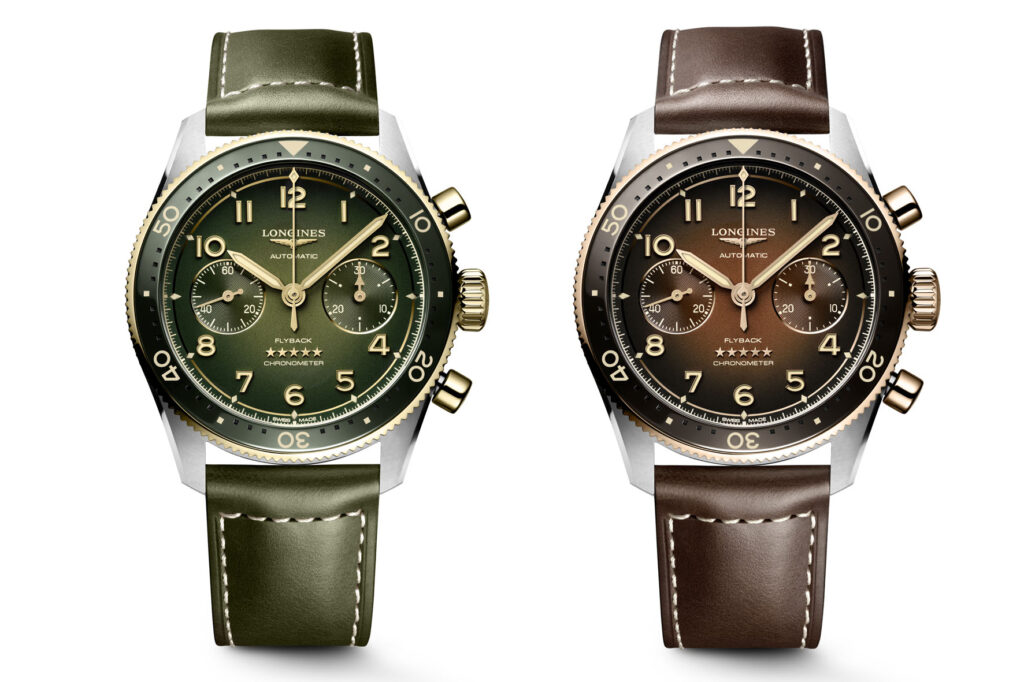
A watch in perfect Longines style, then, which, like the other Spirit Flybacks in the collection, is at the top end of the brand’s price range. In fact, the new chronograph costs 6,900 €. But consider the fact that it brings together mechanical technology and a precious material – in a limited quantity – and that it shows timeless aesthetics and charm. Not to mention that men, enthusiasts or not, like chronographs because they offer something to play with, moving back and forth. Although not the most popular complication (that is the date-disk dial), the chronograph with its hands and pushers continues to seduce as much as the steel and gold combo. With the new Longines Spirit Flyback, the winged hourglass brand has hit on the winning combination.
By Davide Passoni

